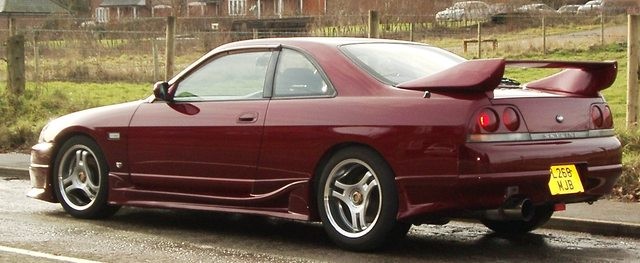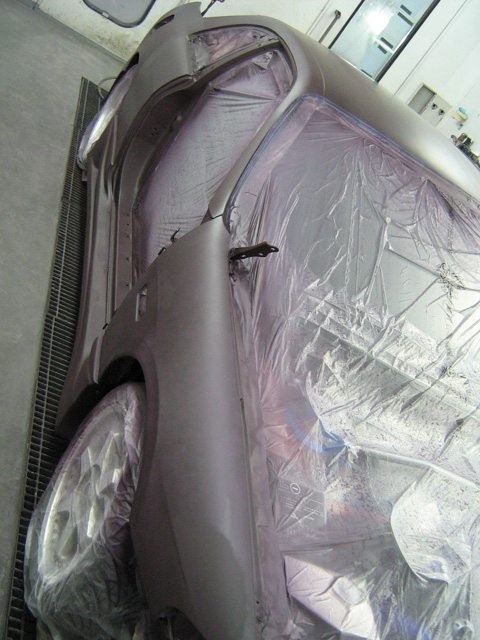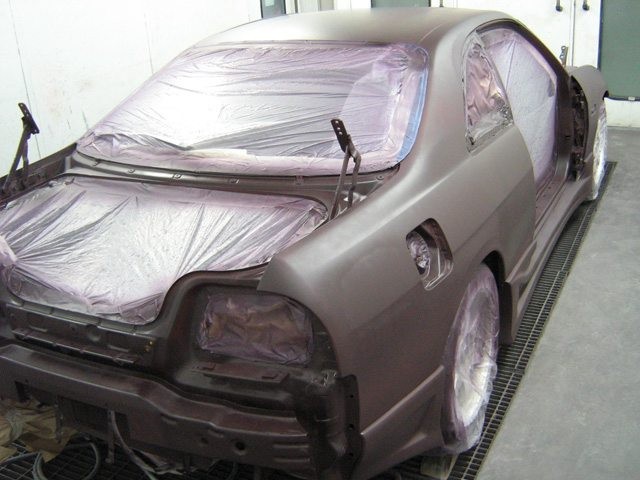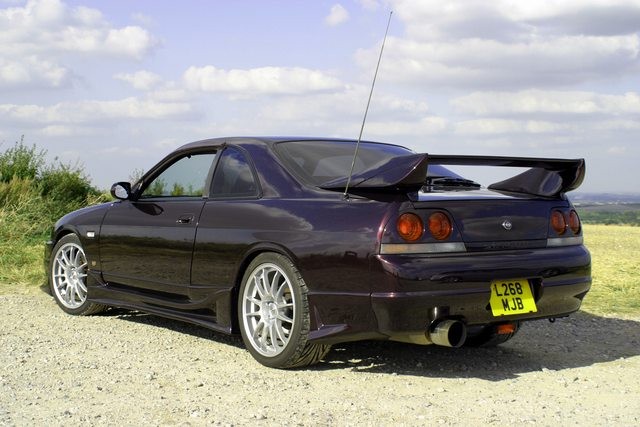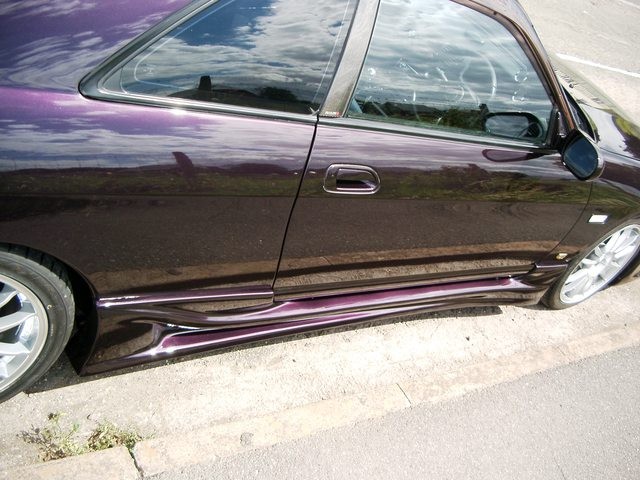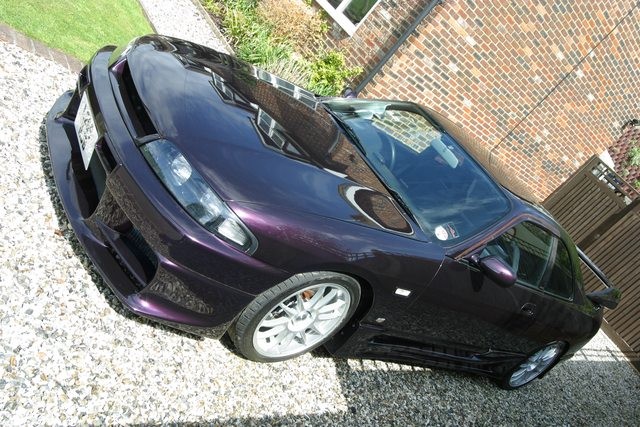Changing the color of your car can be a fantastic way to refresh its appearance and make it stand out. At CARS.EDU.VN, we understand that car color changes, whether through a new paint job or a vehicle wrap, can dramatically alter your vehicle’s aesthetic. We provide expert insights and guidance on automotive restyling options like car painting costs, so you can make informed decisions and achieve the perfect look for your beloved ride. Explore our comprehensive resources to find out the cost of changing your car’s color, including information on car wraps and auto painting, and discover how a car color change can transform your vehicle.
1. Understanding the Allure of a Car Color Transformation
Changing the color of your car can breathe new life into an older vehicle or personalize a newer one to better reflect your style. Whether you’re considering a sleek, modern matte finish or a vibrant, eye-catching hue, the possibilities are endless. But how do you decide if a color change is right for you, and what factors should influence your decision? Let’s explore.
1.1. Why Change Your Car’s Color?
There are several reasons why someone might want to change the color of their car:
- Personalization: Expressing individuality and making a statement.
- Aesthetic Upgrade: Refreshing the car’s appearance, especially if the existing paint is faded or damaged.
- Resale Value: In some cases, a unique or popular color can increase resale value.
- Repair Coverage: If extensive bodywork is needed, a new paint job can blend repairs seamlessly.
- Fashion Trends: Keeping up with current automotive color trends.
1.2. Paint vs. Wrap: Weighing Your Options
When considering a car color transformation, two primary methods come to mind: painting and wrapping. Each has its own set of advantages and disadvantages, making the choice dependent on your budget, desired outcome, and long-term goals.
- Painting: A traditional respray involves stripping the old paint, preparing the surface, and applying new coats of paint and clear coat.
- Wrapping: Applying a large vinyl decal over the original paint, offering a temporary and reversible color change.
2. The Cost Factors of a Car Paint Job
A high-quality paint job can dramatically improve your car’s appearance, but it’s essential to understand the various factors that influence the final cost. At CARS.EDU.VN, we break down these elements to help you budget effectively and avoid surprises.
2.1. Size and Type of Vehicle
The size of your vehicle is a significant determinant of the cost to change the color of car. Larger vehicles require more materials and labor, naturally increasing the price.
| Vehicle Type | Average Cost Range |
|---|---|
| Compact Car | $3,000 – $7,000 |
| Sedan | $3,500 – $8,000 |
| SUV/Truck | $4,000 – $9,000 |
| Oversized Vehicles | $5,000 + |
2.2. Quality of Paint
The type of paint you choose significantly impacts the overall cost. Basic enamel paints are more affordable but less durable, while higher-quality options like urethane or metallic paints offer better longevity and finish.
| Paint Type | Characteristics | Average Cost |
|---|---|---|
| Enamel | Affordable, but less durable and prone to fading. | $50 – $150 per gallon |
| Acrylic Lacquer | Dries quickly, provides a glossy finish, but not as durable as other options. | $80 – $200 per gallon |
| Urethane | Highly durable, resistant to chips and scratches, excellent color retention. | $150 – $400 per gallon |
| Metallic/Pearl | Contains metallic flakes for a shimmering effect, more expensive. | $200 – $500 per gallon |
2.3. Body Work and Repairs
Before painting, any dents, rust, or imperfections need to be addressed. Extensive bodywork can substantially increase the cost of the respray. The cost of body work repairs can vary widely based on the extent of the damage. Minor dents and scratches may cost a few hundred dollars to repair, while significant rust or collision damage could range from $1,000 to $5,000 or more.
2.4. Labor Costs
Labor costs vary by location and the shop’s expertise. Experienced technicians may charge more but offer superior results.
| Labor Task | Average Cost |
|---|---|
| Sanding and Preparation | $500 – $1,500 |
| Masking and Taping | $200 – $500 |
| Paint Application (Base Coat) | $800 – $2,000 |
| Clear Coat Application | $500 – $1,200 |
| Buffing and Polishing | $300 – $800 |
| Reassembly (Lights, Trim, etc.) | $200 – $500 |
2.5. Shop Reputation and Location
Established, reputable shops typically charge more due to their higher standards and quality of work. Location also plays a role, with urban areas often having higher labor rates.
Tips for Finding a Reputable Shop:
- Read Reviews: Check online reviews and testimonials.
- Ask for Referrals: Seek recommendations from friends or local car enthusiasts.
- Check Credentials: Ensure the shop is certified and uses quality materials.
- Get a Detailed Estimate: A comprehensive estimate should outline all costs involved.
2.6. Additional Costs
Be aware of potential add-ons that can inflate the final bill:
- Color Sanding and Buffing: Enhances the paint’s smoothness and gloss.
- Ceramic Coating: Provides extra protection and shine.
- Paint Protection Film (PPF): Shields the paint from scratches and chips.
- Disassembly and Reassembly: Removing and reinstalling parts like lights, trim, and bumpers.
3. Understanding the Car Wrapping Option
Car wrapping is an increasingly popular alternative to traditional paint jobs. It involves applying a large vinyl decal over the car’s original paint, offering a wide range of colors and finishes.
3.1. What is Car Wrapping?
Car wrapping involves covering a vehicle’s exterior with a vinyl film. This film acts as a protective layer, shielding the original paint from scratches, chips, and UV damage.
3.2. Types of Car Wraps
Various types of car wraps are available, each offering different aesthetics and levels of protection:
| Wrap Type | Characteristics | Average Cost |
|---|---|---|
| Gloss | Provides a shiny, reflective finish similar to traditional paint. | $2,500 – $5,000 |
| Matte | Offers a non-reflective, modern look. | $3,000 – $6,000 |
| Satin | A middle ground between gloss and matte, providing a smooth, velvety appearance. | $3,000 – $6,000 |
| Metallic | Contains metallic flakes for a shimmering effect. | $3,500 – $7,000 |
| Chrome | Highly reflective, mirror-like finish, typically the most expensive. | $5,000 – $10,000 + |
| Custom Printed | Allows for unique designs, logos, or patterns. | Varies based on complexity |
3.3. Car Wrap Cost Factors
Several factors influence the cost of a car wrap:
- Vehicle Size: Larger vehicles require more material and labor.
- Type of Wrap: Specialty wraps like chrome or custom prints are more expensive.
- Complexity of Design: Intricate designs and patterns increase labor costs.
- Installer Expertise: Experienced installers charge more but ensure a flawless finish.
- Location: Prices vary by region, with urban areas often being more expensive.
3.4. Benefits of Car Wrapping
Car wrapping offers several advantages over traditional paint jobs:
- Cost-Effective: Generally less expensive than a high-quality paint job.
- Protection: Shields the original paint from damage.
- Reversible: Can be removed without harming the original paint.
- Customization: Offers a wide range of colors and finishes.
- Faster Turnaround: Typically quicker to apply than a full respray.
3.5. Drawbacks of Car Wrapping
Despite the advantages, car wrapping has some limitations:
- Durability: Wraps are not as durable as paint and can be damaged by harsh weather or improper care.
- Lifespan: Wraps typically last 3-7 years, depending on the quality and maintenance.
- Seams: Visible seams may be present, especially on complex curves and edges.
- Maintenance: Requires special cleaning products and techniques to maintain the finish.
4. DIY vs. Professional Car Color Change
Deciding whether to tackle a car color change yourself or hire a professional is a crucial decision. Each option has its own set of considerations, including cost, time, skill level, and potential outcomes.
4.1. DIY Car Painting
Painting your car yourself can save money, but it requires significant expertise, time, and equipment.
4.1.1. Cost Savings
The primary advantage of DIY car painting is the potential cost savings. You avoid labor costs, which can be a substantial part of a professional job.
4.1.2. Equipment and Materials
- Paint: Quality automotive paint, primer, and clear coat.
- Spray Gun: A professional-grade spray gun for even application.
- Air Compressor: To power the spray gun.
- Sanding Tools: Sandpaper, blocks, and a power sander.
- Masking Supplies: Tape, paper, and plastic sheeting.
- Safety Gear: Respirator, gloves, and eye protection.
- Tools: Various tools for disassembly and reassembly.
4.1.3. Skill Level and Time Commitment
DIY car painting requires a high level of skill and a significant time commitment. Proper preparation, painting technique, and finishing are crucial for a professional-looking result.
4.1.4. Potential Pitfalls
- Uneven Finish: Achieving a smooth, consistent finish can be challenging without professional equipment and technique.
- Paint Runs and Sags: Improper spray technique can lead to unsightly runs and sags.
- Color Matching: Matching the original color or achieving a uniform color across all panels can be difficult.
- Surface Imperfections: Poor preparation can result in visible imperfections in the final finish.
4.2. DIY Car Wrapping
Wrapping your car yourself is another option, but it also requires skill and patience.
4.2.1. Cost Savings
Similar to DIY painting, wrapping your car yourself can save on labor costs.
4.2.2. Materials and Tools
- Vinyl Wrap: High-quality vinyl wrap film.
- Heat Gun: To stretch and conform the wrap to the car’s contours.
- Squeegee: To smooth out the wrap and remove air bubbles.
- Cutting Tools: Precision knives and trimming tools.
- Cleaning Supplies: Surface cleaners and degreasers.
- Gloves: To prevent fingerprints and contamination.
4.2.3. Skill Level and Time Commitment
DIY car wrapping requires patience and attention to detail. Proper application technique is essential to avoid bubbles, creases, and tears.
4.2.4. Potential Pitfalls
- Air Bubbles and Creases: Trapped air can create unsightly bubbles and creases.
- Tears and Stretching: Overstretching the wrap can cause tears and distortion.
- Poor Adhesion: Improper surface preparation can lead to poor adhesion and peeling.
- Seam Visibility: Visible seams can detract from the overall appearance.
4.3. Professional Car Color Change
Hiring a professional ensures a high-quality finish and minimizes the risk of errors.
4.3.1. Expertise and Quality
Professional shops have experienced technicians who use quality materials and techniques to achieve a flawless finish.
4.3.2. Warranty and Assurance
Most professional shops offer a warranty on their work, providing peace of mind and protection against defects.
4.3.3. Time Savings
Professionals can complete the job much faster than a DIYer, saving you valuable time and effort.
4.3.4. Cost Considerations
The primary drawback of hiring a professional is the higher cost. However, the quality and assurance may be worth the investment.
5. Real-World Cost Examples
To give you a better understanding of the potential costs, let’s look at some real-world examples.
5.1. Cost to Paint a Honda Civic
- Basic Enamel Paint Job: $3,000 – $5,000
- High-Quality Urethane Paint Job: $5,000 – $8,000
- Including Body Work: Add $500 – $2,000 for dent and rust repair.
5.2. Cost to Wrap a Ford Mustang
- Gloss Wrap: $2,500 – $4,500
- Matte Wrap: $3,000 – $5,000
- Including Custom Design: Add $500 – $1,500 for design and printing.
5.3. Factors Affecting Pricing in Different Regions
- Urban Areas: Higher labor costs due to increased demand and cost of living.
- Rural Areas: Lower labor costs but potentially higher material costs due to limited availability.
- Specialty Shops: Higher prices for specialized services and expertise.
6. Maintaining Your New Car Color
Whether you choose to paint or wrap your car, proper maintenance is crucial to preserving its new look.
6.1. Washing and Cleaning
- Regular Washing: Wash your car regularly to remove dirt, grime, and contaminants.
- Proper Cleaning Products: Use pH-neutral car wash soap and avoid harsh chemicals.
- Gentle Washing Techniques: Use a soft microfiber cloth or sponge to avoid scratching the surface.
6.2. Protecting from the Elements
- Parking in the Shade: Park your car in the shade to protect it from UV damage.
- Car Covers: Use a car cover to shield it from sun, rain, and snow.
- Waxing and Sealing: Apply wax or sealant to protect the paint or wrap from the elements.
6.3. Specific Care for Wraps
- Avoid High-Pressure Washing: High-pressure washing can lift the edges of the wrap.
- Use Wrap-Specific Cleaners: Use cleaners designed for vinyl wraps to avoid damage.
- Gentle Drying: Use a soft microfiber towel to dry the wrap and avoid scratching.
6.4. Repairing Minor Damage
- Touch-Up Paint: Use touch-up paint to repair minor chips and scratches on painted surfaces.
- Wrap Repair Kits: Use wrap repair kits to fix small tears and bubbles in vinyl wraps.
- Professional Repair: For significant damage, consult a professional for repair or replacement.
7. The Impact on Resale Value
Changing the color of your car can affect its resale value, depending on the color and quality of the job.
7.1. Popular Colors
- Neutral Colors: Colors like black, white, and silver are generally safe bets for resale value.
- Factory Colors: Sticking to the original factory colors can maintain or increase resale value.
7.2. Unique or Bold Colors
- Potential Drawbacks: Unusual or bold colors may appeal to a smaller audience, potentially reducing resale value.
- Niche Appeal: If the color is well-executed and appeals to a specific niche, it could increase value.
7.3. Quality of Workmanship
- Professional Finish: A high-quality paint job or wrap can enhance the car’s appearance and increase its value.
- Poor Workmanship: A poorly executed color change can detract from the car’s appearance and decrease its value.
7.4. Documentation
- Keep Records: Keep records of all work done, including receipts and warranties.
- Transparency: Be transparent with potential buyers about the color change and its quality.
8. Finding Inspiration
Choosing the right color for your car can be a fun and creative process. Here are some resources to help you find inspiration:
8.1. Online Resources
- Pinterest: Browse automotive color trends and ideas.
- Instagram: Follow car enthusiasts and custom shops for inspiration.
- Automotive Forums: Participate in discussions and see what others have done.
8.2. Car Shows and Events
- Local Car Shows: Attend local car shows to see different colors and finishes in person.
- Major Automotive Events: Visit major automotive events like SEMA to see the latest trends and innovations.
8.3. Color Visualizers
- Online Tools: Use online color visualizers to see how different colors look on your car model.
- Virtual Customization: Experiment with different colors and finishes before making a decision.
9. Expert Opinions and Case Studies
Hearing from experts and seeing real-world examples can provide valuable insights.
9.1. Quotes from Automotive Professionals
- “A high-quality paint job is an investment that can transform your car’s appearance and protect its value.” – John Smith, Master Painter at AutoFinish Pros.
- “Car wrapping offers a cost-effective way to personalize your car and protect its paint.” – Jane Doe, Wrap Specialist at VinylWraps Inc.
9.2. Case Studies
- Project Mustang: A case study of a Ford Mustang that underwent a complete color change from silver to a custom matte blue, increasing its perceived value and attracting attention at car shows.
- Eco-Friendly Wrap: An example of a Toyota Prius wrapped in a sustainable vinyl film, showcasing the environmental benefits of car wrapping.
10. Frequently Asked Questions (FAQs) About Car Color Changes
Here are some frequently asked questions to help you make an informed decision:
-
How much does it cost to change the color of my car? The cost to change the color of your car varies widely depending on whether you choose a paint job or a car wrap. A paint job can range from $3,000 to $10,000 or more, depending on the quality of the paint, the size of the vehicle, and the extent of any necessary body work. Car wraps generally range from $2,500 to $7,000, depending on the type of wrap (gloss, matte, metallic, etc.) and the complexity of the design.
-
Is it cheaper to wrap or paint my car? Generally, car wrapping is less expensive than a high-quality paint job. Car wraps can provide a similar aesthetic at a lower cost, and they also offer the added benefit of being reversible, which means you can remove the wrap and return to the original paint color if desired.
-
How long does a car wrap last? The lifespan of a car wrap typically ranges from 3 to 7 years, depending on the quality of the material and how well it is maintained. Factors like exposure to sunlight, weather conditions, and cleaning practices can affect the longevity of the wrap.
-
Will wrapping my car damage the original paint? No, car wrapping should not damage the original paint if it is done correctly. In fact, car wraps can protect the original paint from scratches, chips, and UV damage. However, it’s crucial to ensure the wrap is installed and removed by professionals to avoid any potential issues.
-
Can I change the color of my car myself? Yes, you can change the color of your car yourself through DIY painting or wrapping. However, both options require a significant amount of skill, time, and equipment. Without proper preparation and technique, the results may not be as professional as a job done by experts.
-
Does changing the color of my car affect its resale value? Changing the color of your car can affect its resale value, depending on the color and the quality of the job. Neutral colors and factory colors tend to maintain or increase resale value, while unique or bold colors may appeal to a smaller audience.
-
How do I maintain a car wrap? To maintain a car wrap, wash it regularly with pH-neutral car wash soap and avoid harsh chemicals. Use a soft microfiber cloth or sponge to prevent scratches, and avoid high-pressure washing that can lift the edges of the wrap.
-
What are the benefits of car wrapping? Car wrapping offers several benefits, including cost-effectiveness, protection of the original paint, reversibility, customization options, and a faster turnaround time compared to traditional paint jobs.
-
How do I find a reputable shop for car painting or wrapping? To find a reputable shop, check online reviews and testimonials, ask for referrals from friends or local car enthusiasts, ensure the shop is certified and uses quality materials, and get a detailed estimate outlining all costs involved.
-
What additional costs should I be aware of when changing my car’s color? Be aware of potential add-ons such as color sanding and buffing, ceramic coating, paint protection film, and disassembly and reassembly costs. These can add to the overall cost of the project.
Conclusion: Making the Right Choice
Changing the color of your car is a significant decision that involves careful consideration of cost, quality, and personal preferences. Whether you opt for a traditional paint job or a modern car wrap, the key is to do your research, weigh your options, and choose a method that aligns with your goals and budget.
At CARS.EDU.VN, we’re dedicated to providing you with the information and resources you need to make informed decisions about your automotive needs. From detailed cost breakdowns to expert advice and real-world examples, we’re here to help you transform your car into a reflection of your unique style and personality.
Ready to explore more? Visit CARS.EDU.VN today for more insights, tips, and services to enhance your car ownership experience. Contact us at 456 Auto Drive, Anytown, CA 90210, United States, or reach out via Whatsapp at +1 555-123-4567. Let cars.edu.vn be your trusted partner in all things automotive.
